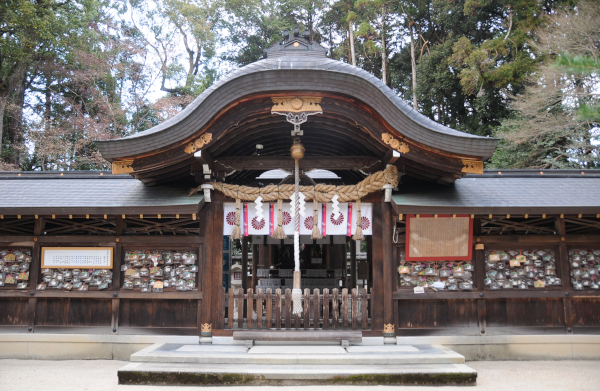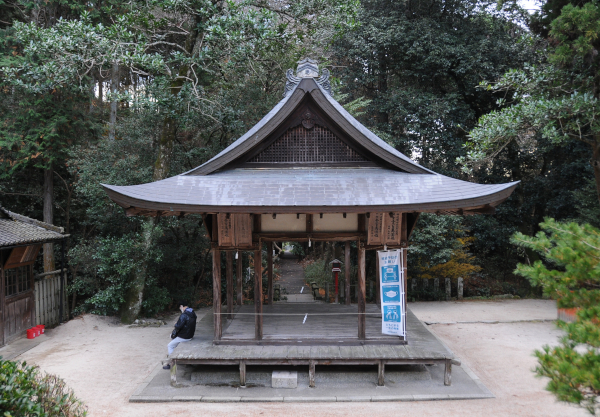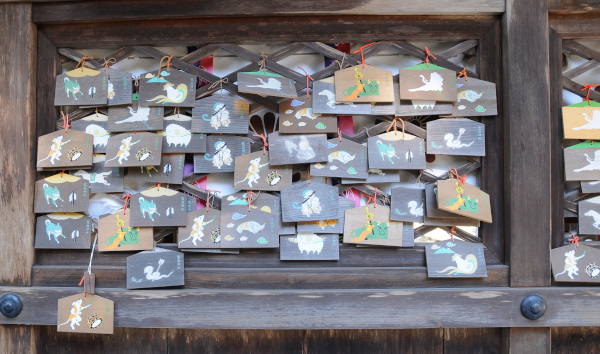I’ve been exploring my new neighborhood, and there are some interesting sights nearby my house. I have visited the shrine a few times now, first time during the koyo, last time this afternoon. That’s why the trees go from full color to bare and back in the following photos.

Saginomori means “Heron’s Forest”, and the shrine itself dates back more than 1000 years, to the beginning of the Heian Period. It was established at a different site at the foot of Mt. Hiei (which is not far from here), where it served as the ubusunagami (guardian deity of one’s birthplace) for seven villages. It was relocated to the present location in 1689. The shrine is dedicated to Susanoo-no-mikoto, the younger brother of sun goddess Amaterasu.

It is a relatively small shrine with a single dance stage and a worship hall at the end of a long access road that leads up the hill. The trees surrounding it, however, are majestic and look very old.

An interesting feature is the bridge at the southern entrance to the shrine. This little stone bridge was once part of Shugakuin Villa (not far from here either) where it spanned the Otowa river in front of the entrance. Many emperors walked over this bridge when they came to relax at Shugakuin, but today it’s for the likes of you and me, who take the shortcut to Manshu-in Temple via the steps right after it.

The collection of ema votive tablets – one for each of the 12 zodiacs – is very cute. I plan to buy one when I go there early next year for my hatsumode.

The shrine also boasts a large yaegaki stone wall and says that whoever touches it will be blessed with “good marital and romantic relationships”. Always worth a try, isn’t it?

